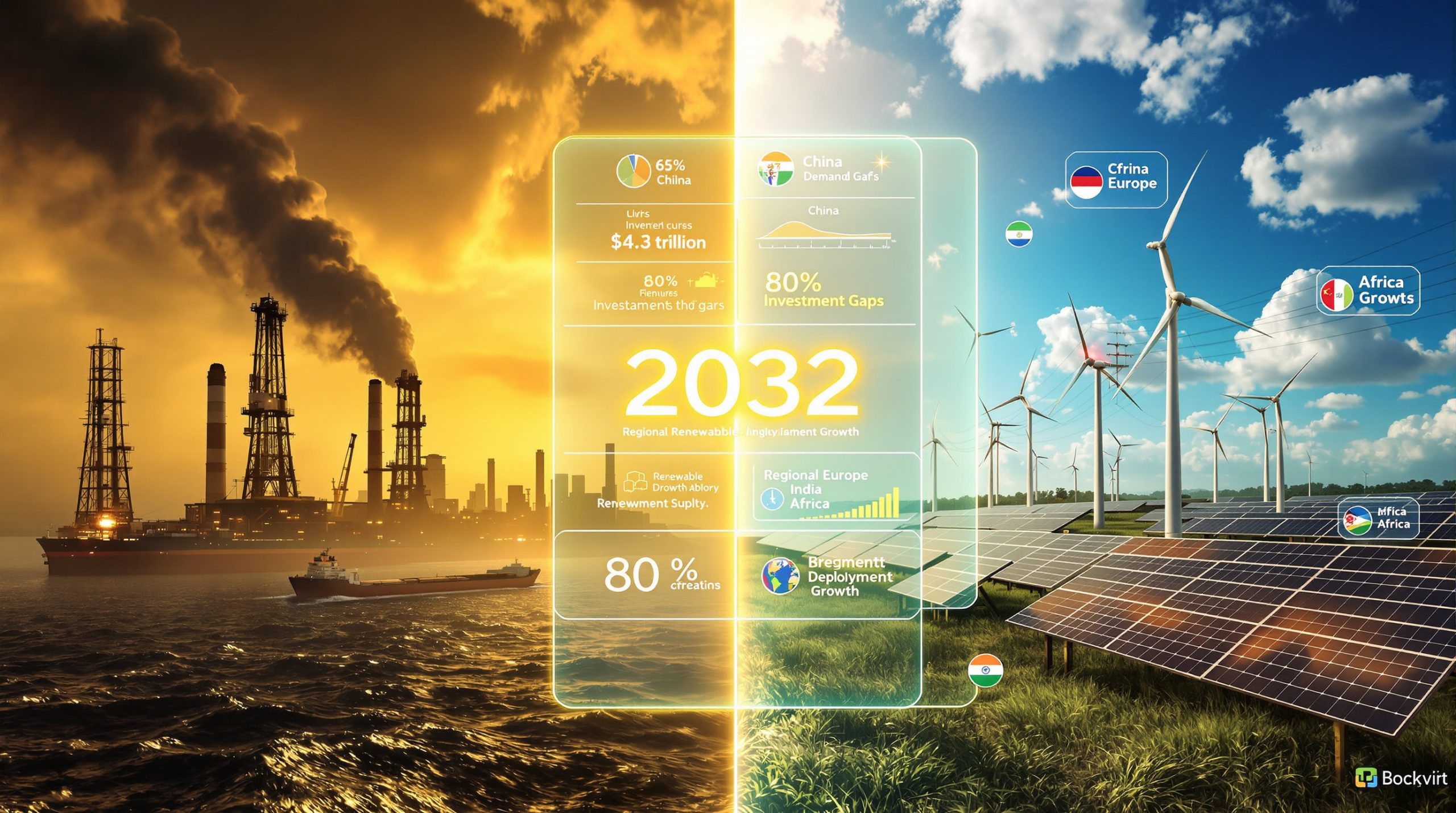Understanding the Foundations of Economic Growth Assumptions
Modern economic systems operate under a fundamental assumption that growth can continue indefinitely, despite mounting evidence suggesting finite planetary boundaries and resource constraints. This belief system forms the backbone of policy decisions, investment strategy components, and societal expectations across developed nations, creating what many economists now recognise as the illusion of indefinite growth.
Contemporary economic models treat expansion as the natural state of healthy economies. This perspective emerged from historical conditions that may not represent sustainable long-term patterns. The assumption of continuous growth influences everything from pension calculations to infrastructure planning, creating systemic vulnerabilities when reality fails to match projections.
Energy serves as the fundamental input for all economic activity, yet mainstream economic theory treats it merely as another substitutable commodity. This oversight creates models that assume infinite technological solutions for resource constraints, ignoring the physical laws that govern energy systems and their relationship to economic output.
Historical Context: The Post-War Growth Paradigm
The Golden Age of Cheap Energy (1945-1973)
The period between 1945 and 1973 established economic patterns based on exceptionally cheap energy resources that fostered unrealistic expectations about permanent prosperity. During these decades, oil prices remained remarkably stable at approximately $20 per barrel in inflation-adjusted terms, creating unprecedented economic conditions.
This era of abundant, low-cost energy enabled remarkable societal developments:
• Wage equality remained at historic lows with Gini coefficients around 0.35
• Healthcare costs consumed less than 6% of GDP
• Home ownership became accessible to middle-class families nationwide
• Manufacturing remained predominantly domestic with minimal complex supply chains
• Small businesses could compete effectively without elaborate organisational hierarchies
The Energy-Economic Relationship
Between 1920 and 1970, US oil supply grew rapidly from easily accessible sources located near major markets. Early extraction operations required minimal complexity, delivering Energy Return on Investment (EROI) ratios between 50-100, meaning every unit of energy invested in extraction returned 50-100 units of usable energy.
| Period | Oil Price (Inflation-Adjusted) | Economic Growth Rate | Wage Disparity (Gini) | EROI Range |
|---|---|---|---|---|
| 1948-1973 | $20/barrel | 4.2% annually | 0.35 | 50-100 |
| 1974-2000 | $45/barrel | 3.1% annually | 0.42 | 30-50 |
| 2001-2025 | $75/barrel | 2.3% annually | 0.48 | 10-30 |
The transition from simple extraction to complex operations became evident as easily accessible resources depleted. Alaska's oil required working in harsh climates, constructing extensive pipeline networks, and utilising specialised transportation systems to reach refineries thousands of miles away.
Institutional Incentives for Growth Narratives
Political Economy of Optimistic Forecasting
Politicians require growth narratives to maintain electoral viability, as campaigns built on managed decline or steady-state economics face significant voter resistance. This creates systemic pressure to promise expansion regardless of feasibility, leading to policy frameworks that assume continued economic growth.
The political incentive structure rewards short-term optimism over long-term sustainability. Election cycles encourage politicians to make promises based on growth projections that may prove unrealistic, creating a feedback loop where unrealistic expectations become institutionalised in policy frameworks.
Academic and Corporate Growth Dependencies
Universities depend on student enrolment driven by employment prospects, while corporations require expanding markets to justify shareholder returns. These institutional needs create powerful constituencies supporting growth-centric thinking, even when evidence suggests such growth may not be sustainable.
Key institutional dependencies include:
• Educational institutions require growth narratives to justify tuition costs and degree programmes
• Pension systems depend on investment returns tied to economic expansion
• Corporate valuations rely on growth projections that may exceed realistic possibilities
• Government budgets assume tax revenue growth from expanding economic activity
Physical Reality Meets Growth Assumptions
The Debt Substitution Mechanism
When energy costs began rising in the 1970s, governments responded by increasing debt rather than adjusting growth expectations. This pattern accelerated dramatically after 2008, creating unprecedented debt accumulation patterns that reflect concerns about US debt and tariffs.
Federal Debt-to-GDP Evolution:
• 1970-1980: Below 35% of GDP
• 1980-2008: Gradual increase to 70% of GDP
• 2008-2025: Explosive growth to 120% of GDP
Research suggests that government debt-to-GDP ratios exceeding 90% inhibit economic growth, yet the US currently operates at 120% on a public debt basis. Interest payments on this debt now exceed annual defence spending, requiring tax increases simply to service existing obligations.
Complexity Costs and Diminishing Returns
As easily accessible resources become depleted, economic systems require increasing complexity to maintain output levels. This complexity demands higher energy inputs while delivering proportionally smaller benefits, creating a sustainability paradox that challenges growth assumptions.
Modern economic complexity manifests through challenges in critical raw materials supply and other essential resources:
• Supply chain elaboration requiring coordination across multiple countries and time zones
• Regulatory compliance consuming increasing portions of business resources
• Financial system complexity creating systemic risks and higher transaction costs
• Infrastructure maintenance requiring exponentially increasing investment to maintain current service levels
Recessions consistently occurred when oil prices rose, forcing governments to bail out economies with additional debt. This pattern suggests that debt functions as a temporal substitution mechanism, borrowing from future economic capacity to maintain current consumption levels.
Historical Cycles and Growth Illusions
Secular Cycle Analysis
Research by Peter Turchin and Sergey Nefedov examining eight historical societies reveals consistent patterns that challenge assumptions about indefinite growth. Their analysis documented four-stage cycles spanning centuries, which provides context for understanding the myth of infinite growth:
1. Expansion Phase: Population and economy grow rapidly with abundant resources
2. Stagflation Period: Growth slows as limits approach, inequality increases
3. Crisis Years: System stress leads to conflict and potential collapse (lasting 20-50 years)
4. Recovery Phase: New equilibrium establishes with reduced complexity
Contemporary Stagflation Indicators
Current economic conditions mirror historical stagflation phases, characterised by specific diagnostic markers that economists studying the growth illusion have identified:
• Increasing wealth concentration among elite populations
• Rising debt levels across government, corporate, and household sectors
• Growing social tensions and political instability
• Declining real wages for middle-class populations
• Reduced social mobility compared to previous generations
The stagflation phase historically precedes crisis periods lasting 20-50 years, during which populations experience significant decline before establishing new equilibrium conditions. Furthermore, this analysis suggests that current debt accumulation and inequality patterns represent predictable stages rather than anomalous conditions.
Consequences of Growth-Dependent Systems
Infrastructure and Social Programme Vulnerabilities
Pension systems, healthcare programmes, and infrastructure investments were designed assuming continued economic expansion. As growth slows or reverses, these commitments become increasingly difficult to maintain without significant restructuring or reduced service levels.
Specific vulnerabilities include:
• Social Security systems requiring 3+ workers per retiree to maintain current benefit levels
• Healthcare infrastructure consuming increasing GDP percentages as population ages
• Transportation networks requiring exponential investment to maintain current functionality
• Educational systems producing graduates for economies that may not support traditional career paths
Financial Market Distortions
Financial markets price assets based on growth projections that may prove unrealistic, creating systematic overvaluation across multiple sectors. This phenomenon particularly affects technology and renewable energy investments, where valuations assume continued exponential expansion.
Asset pricing models embedded with growth assumptions create bubble conditions when underlying physical constraints prevent promised returns. The disconnect between financial expectations and physical reality generates market volatility and potential systemic collapse scenarios.
Alternative Economic Models and Transition Challenges
Steady-State Economics Framework
Some economists advocate for models focused on sustainability rather than expansion, emphasising resource efficiency, waste reduction, and quality of life metrics beyond GDP measurement. These approaches recognise planetary boundaries while attempting to maintain social stability.
Key principles include:
• Circular economy models minimising waste streams
• Resource productivity optimisation rather than output maximisation
• Well-being indicators replacing GDP as success metrics
• Localised production reducing transportation energy requirements
Political Obstacles to Degrowth
Implementing alternative economic models faces significant political resistance, as populations accustomed to growth expectations resist policies that appear to limit future prosperity. This creates a political paradox where necessary adaptations become politically impossible until crisis conditions force acceptance.
The challenge involves transitioning from growth-dependent institutions without triggering social collapse or political upheaval. Historical examples suggest that such transitions typically occur during crisis periods rather than proactive policy implementations.
Individual Preparation for Post-Growth Reality
Building Practical Resilience
Rather than relying on financial instruments tied to growth assumptions, individuals can develop capabilities that retain value regardless of economic conditions. These investments in human capital and practical skills provide stability during transition periods.
Essential resilience capabilities:
• Food production and preservation techniques for household security
• Basic repair and maintenance skills reducing dependency on complex supply chains
• Local community relationships and mutual aid networks
• Health and fitness maintenance reducing healthcare system dependencies
• Practical crafts and manual skills with intrinsic economic value
Investment Strategies for Resource Constraints
Traditional investment advice assumes continued market growth, but resource limitations may favour different approaches that account for physical constraints and reduced complexity scenarios. This perspective differs significantly from conventional gold price forecast models that assume continued market expansion.
Alternative investment considerations:
• Physical assets with intrinsic utility value regardless of market conditions
• Local and regional business investments serving essential needs
• Skills-based education and training with broad applicability
• Community infrastructure projects enhancing collective resilience
• Resource-efficient technologies that function in lower-energy environments
Future Economic Policy Implications
Rethinking Success Metrics
Policymakers increasingly recognise GDP's limitations as a welfare measure, exploring alternative indicators like Genuine Progress Indicator (GPI) or Gross National Happiness that capture broader measures of societal well-being beyond pure economic output.
These alternative metrics attempt to account for:
• Environmental degradation costs subtracted from economic activity
• Income distribution effects on social stability and consumer purchasing power
• Social capital and community resilience factors
• Resource depletion impacts on future economic capacity
Managing Institutional Transitions
The challenge lies not in whether growth limitations will emerge, but in how societies can adapt their institutions and expectations to function within planetary boundaries while maintaining social stability and democratic governance.
Critical transition elements include:
• Debt restructuring mechanisms that avoid complete financial system collapse
• Social safety nets designed for steady-state rather than growth economies
• Educational systems preparing populations for different economic realities
• International cooperation frameworks managing resource constraints collectively
Recognising Reality While Building Resilience
The illusion of indefinite growth persists because it serves powerful institutional interests and psychological needs, despite mounting evidence of its impossibility. Understanding these limitations enables more realistic planning for individuals, communities, and nations facing an energy-constrained future.
Historical analysis suggests that current conditions represent a predictable stagflation phase within longer secular cycles, potentially leading to crisis periods lasting decades. However, rather than waiting for systemic recognition of growth limits, forward-thinking individuals and communities can begin building resilience through practical skills, local relationships, and sustainable practices.
Key takeaways for realistic preparation:
• Energy constraints will likely force economic contraction regardless of policy responses
• Debt accumulation represents borrowing from future capacity that may not exist
• Complexity costs increase exponentially while delivering diminishing returns
• Local resilience provides stability during broader system transitions
• Practical skills retain value across different economic scenarios
The transition from growth-dependent to steady-state economics represents one of humanity's greatest challenges, but also an opportunity to create more equitable and sustainable societies that prioritise genuine well-being over endless expansion. Success will likely depend on proactive adaptation at individual and community levels rather than waiting for institutional recognition of physical constraints.
Consequently, understanding how uranium market dynamics and other resource constraints interact with economic assumptions becomes crucial for realistic planning. The illusion of indefinite growth may persist in policy discussions, but physical reality ultimately determines economic possibilities.
Disclaimer: This analysis involves economic forecasting and speculation about future conditions based on historical patterns and current trends. Economic conditions can change rapidly due to technological developments, policy interventions, or unforeseen events. Readers should consider multiple perspectives and consult qualified professionals before making significant financial or life decisions based on these projections.
Ready to Navigate Market Opportunities Beyond Growth Assumptions?
Discovery Alert's proprietary Discovery IQ model delivers real-time alerts on significant ASX mineral discoveries, empowering subscribers to identify actionable opportunities ahead of the broader market during periods of economic uncertainty. Begin your 30-day free trial today and position yourself to capitalise on mineral discoveries that can generate substantial returns regardless of broader economic conditions.




